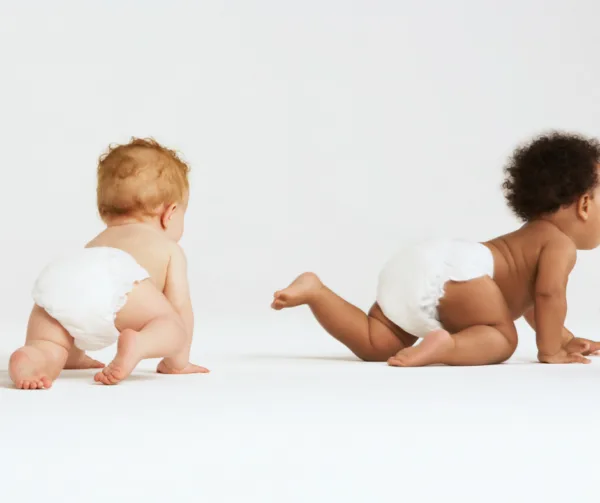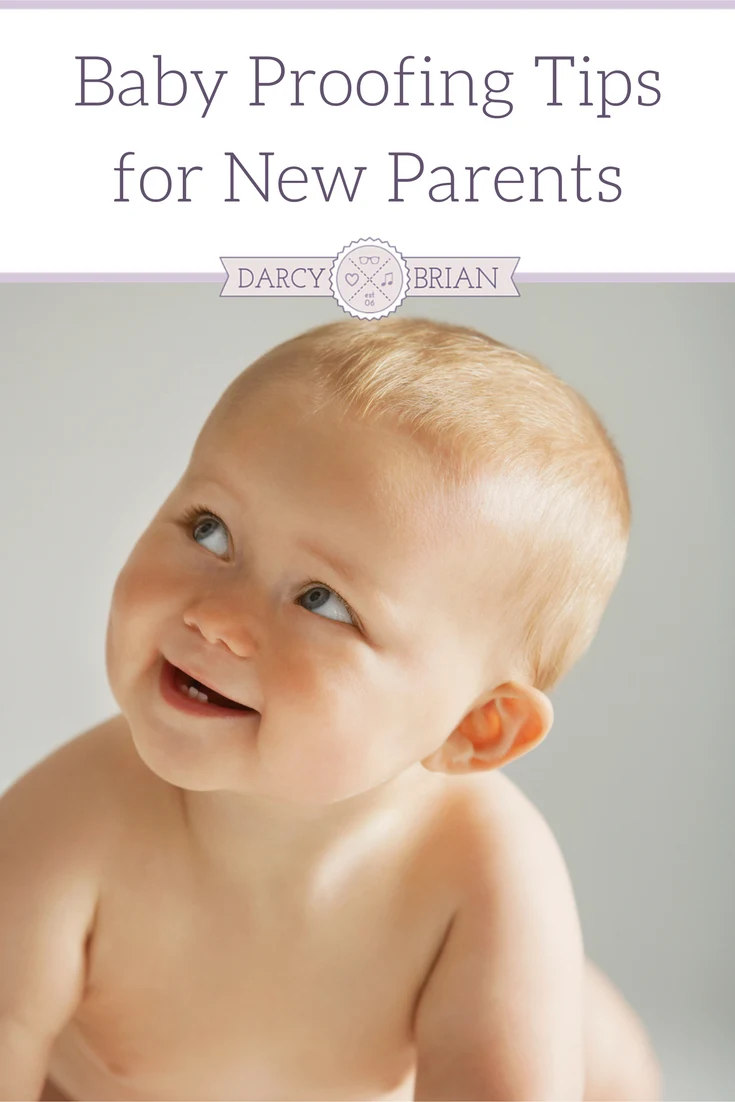Baby proofing is one of those things every parent thinks of, but most parents don’t worry about right away.
I know when my daughter was born, I wasn’t worried about her getting her fingers in sockets or going down the stairs.
She was just a newborn baby and wasn’t going to be near those. Right?
Well, before you know it, that baby is a toddler climbing all over and all the baby proofing you intended to do isn’t finished. That’s where our tips come in handy.

This post contains affiliate links. As an Amazon Associate and a participant in other affiliate programs, we earn a commission on qualifying purchases.
Top Baby Proofing Tips For New Parents
Baby proofing your home is a major concern – and rightfully so. Many accidents that happen in the home could be prevented with a few safety precautions.
These tips are going to help make your home safe for your child in no time.
Walk through your house to make a list of baby proofing needs:
Baby proofing won’t work if you miss something. Take the time to walk through your home and make a list of things that need to be baby proofed.
This includes looking for things like cabinets with cleaning agents, sharp edges on furniture and cabinets, and electrical outlets that are low to the ground.
The tips below for baby proofing help you remember other common hazards.
- Look for any place where drowning could easily occur. Leaking faucets, bathtubs, toilets, and similar areas.
- Get on their level by crawling around the floor to check for hidden outlets, holes, or wires that may not be as noticeable from above.
- Don’t forget to properly secure furniture and appliances that could potentially fall over and hurt your child.
- Have a friend with a little one? Invite them over and follow them around to see what they try to get into. They will find places you never thought of – guaranteed.
Common baby safety items:
Once you know what areas of your home need baby proofing, you can make simple modifications to improve safety.
- Childproof latches for kitchen cabinets
- Socket covers for outlets
- Power strip cover
- Corner protectors for coffee tables, counters, etc
- Toilet seat lock
- Safety gates
There are a wide variety of child safety products and you do not need to use all of them. Start with the most important danger zones you identified, such as stairways and outlets.
Simply picking up dangerous objects and keeping them out of reach can help make your home safer for your baby and improve your peace of mind.
Start baby proofing before baby is born:
Ideally, you should begin baby proofing as soon as you decide to become a parent. However, even after your baby is born you have a little time to get the job done.
At first, your baby won’t be mobile which gives you time to finish baby proofing before baby starts crawling.
- Many parents work hard at child proofing their home but may miss hidden choking hazards throughout the home. An easy test to determine whether or not an object is a choking hazard is to see if it will fit through the hole in a toilet paper roll.
- If an object can slide through easily, it can be picked up by small hands and put in the mouth. Make sure that you don’t make a baby-proofing mistake by overlooking common objects in your home that could spell big danger, such as loose screws, coins, small toys, etc.
Ensuring your baby’s safety is an important part of parenting. It may seem overwhelming at first, but if you focus on baby proofing one room at a time, it is manageable.
It won’t be long before baby is crawling around, so it’s important to use these tips to start baby proofing early.
More Tips For Parenting Babies:
- Helpful Baby Dental Cleaning Tips
- Financial Tips For Having A Second Baby
- What You Need For A Baby In The Winter
- Second Baby Adjustments For Older Siblings
- How to Choose a Baby-Sitter
- Post-Baby Self Esteem Boosters
- Stress Busters for New Parents


Darcy is the founder of “Life With Darcy and Brian,” where she combines her love for education, board games, and crafting to create engaging learning experiences for kids. Her creative projects and writing have been featured in outlets like The Toy Insider, CafeMom, Mom.com, Parents.com, Country Living, and The Pioneer Woman.

